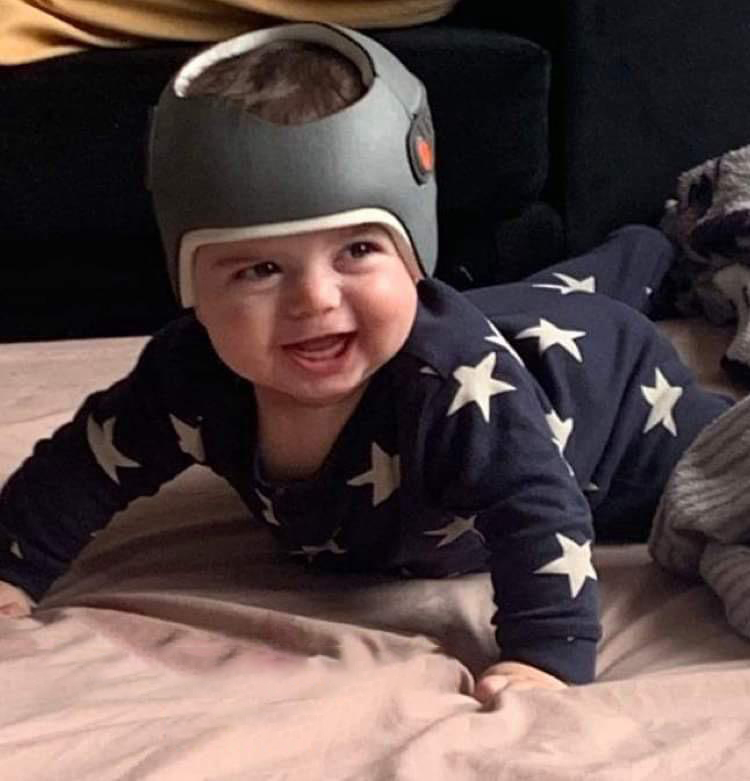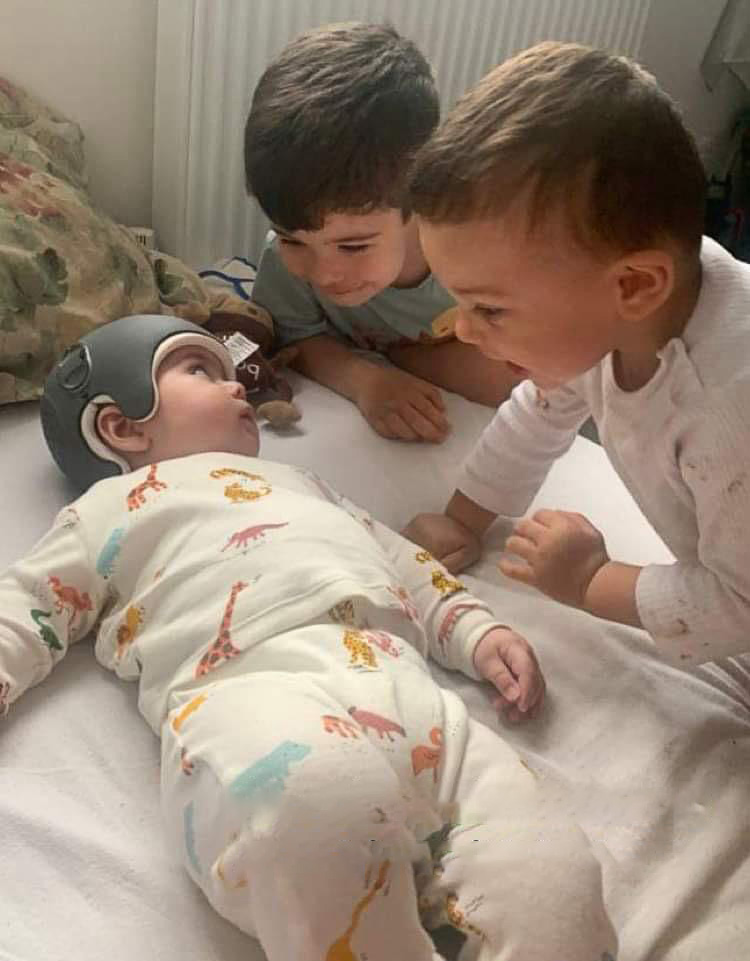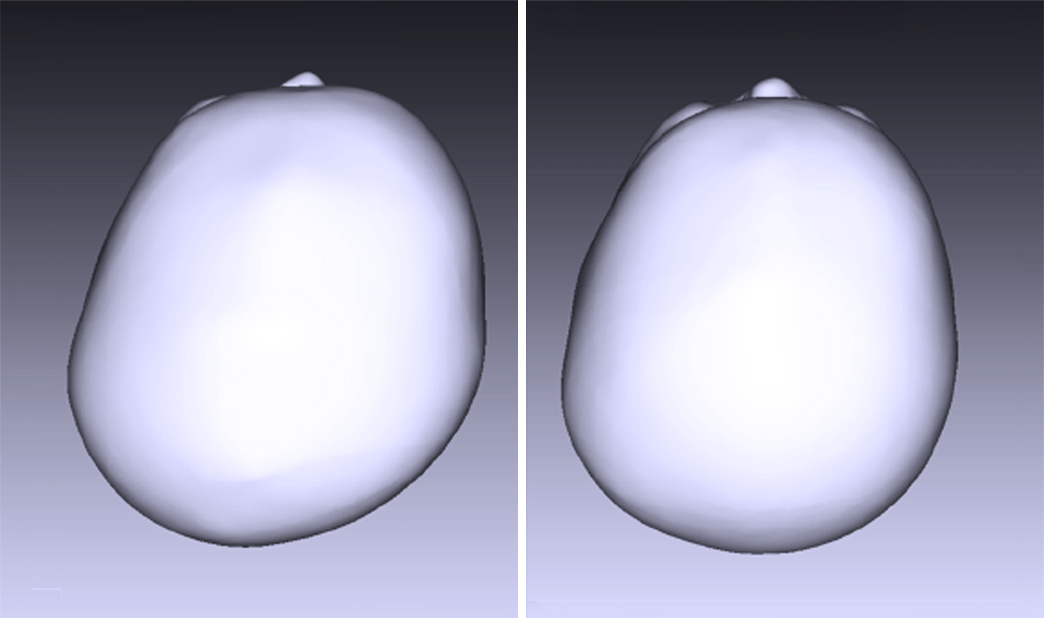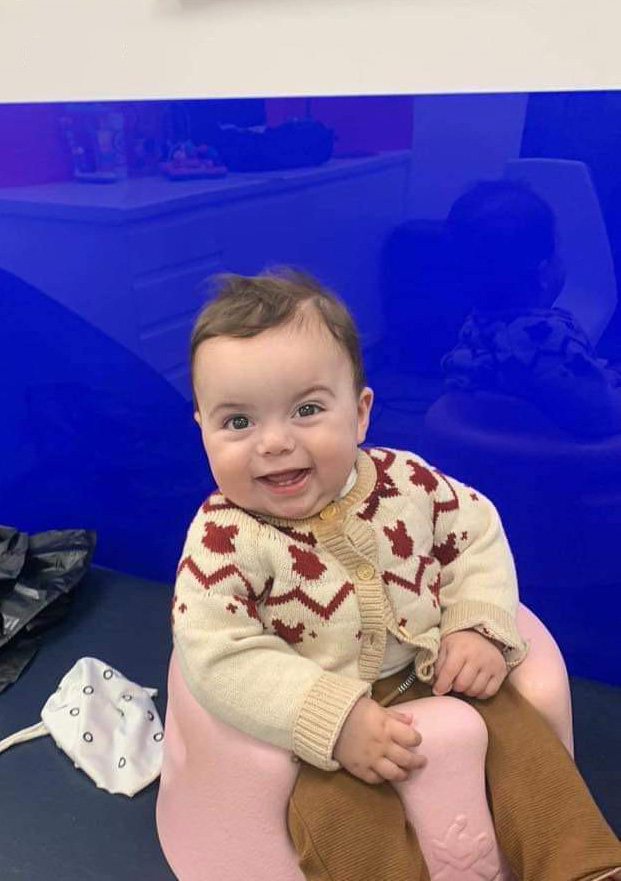
Iyad starting to crawl with his helmet on
16 November 2023
Iyad is mum Hanadi's third son. He has two older brothers, one 16 months and the other 4 years old. Iyad’s abnormal head shape was noticeable from birth. Neither of his elder siblings had had a problem with their head shape and his parents had no idea what condition Iyad was suffering from.
His mother, Hanadi, recalls: "It was very upsetting. His head was really lopsided; we had no idea what had caused it and none of our family or friends had had similar experiences with their babies. As the midwife and health visitor didn’t think it was a problem, we were really left to sort it out ourselves.”

Iyad's older brothers seeing him for the first time in the LOCband Lite helmet
The LOCband is non-invasive and works by applying gentle, constant pressure over the areas of the baby’s skull that are most prominent while allowing unrestricted growth over the flattened areas. The band consists of a soft foam layer inside a thermoplastic shell. As the baby grows, the band will be adjusted frequently to gently guide the skull into a more symmetrical shape.
The optimum age for treatment is between four and seven months.
This is because the skull is most malleable at this age and improvements to head shape tend to take less time and are more dramatic. That is not to say that helmet therapy should be ruled out if the baby is older than seven months. Routinely, babies up to the age of 16 months can be treated very successfully.
The cut off age is around 18 months when the fontanelles (soft spots on the head) are no longer malleable. As babies grow and develop at different rates, it is always worth checking if you are not sure. There have been cases where a baby’s fontanelles have not fused yet by the age of 18 months, who have achieved successful, but less-marked results with cranial remoulding therapy.
Yes - All babies that have completed their course of treatment with us have achieved a measurable improvement in head shape. However, you don’t have to take our word for it.
Recent independent research conducted by a University Hospital in Germany has endorsed the treatment for babies with moderate or severe plagiocephaly.
A larger, retrospective study has just been published that found complete correction was achieved in 94.4% of babies treated with helmet therapy.
The results were conclusive: repositioning achieved acceptable correction in 77.1% of cases, but 15.8% were moved onto helmet therapy because re-positioning was not working. Meanwhile, 94.4% of the infants who started in the helmet-treated group achieved full correction, as did 96.1% of those who were transferred from the repositioning group into the helmet-treated group.
Further information can be found on our Plagiocephaly Research page.
This is very much dependent on how fast your baby is growing. The faster the growth, the more frequently your baby will be seen so that the helmet can be adjusted. In general, reviews will happen at two to four-week intervals.
The price of treatment covers:
It is likely that Iyad’s head shape was simply caused by the stresses and strains of the birth process itself, a condition known as deformational plagiocephaly.
In his case, it soon became clear that it was not resolving itself naturally. Hanadi started searching for more information on the internet and found the London Orthotic Consultancy.
She was relieved to find that LOC had a Cambridge clinic, close to where the family lives. Baby Iyad was assessed in May by Connor Mumford who heads up LOC’s Cambridge clinic.
Connor measured Iyad’s head shape which was indeed at the severe end of the scale with a cranial asymmetry of 20mm. This measurement compares the right and left diagonals at 30 degrees from the centre of the head (front to back). Subtracting one from the other gives the asymmetry value. Less than 6mm is regarded as being within the normal range of head shape, anything over 12mm is deemed to be very severe.

Iyad's head scans before treatment show an asymmetry value of 20mm, and after with a value of 5mm
“Connor was really careful to explain everything about the helmet therapy treatment to me and was wonderful with Iyad. He didn’t over-promise either. He told me that because of the severity of the asymmetry, treatment could take up to 8 months.”
In fact, Iyad’s helmet therapy treatment only took three months. Hanadi was thrilled; “the result is truly amazing. After the first week, Iyad wasn’t bothered by the helmet at all and we were able to adhere to the wear guidelines almost immediately - 22 hours a day.”
Iyad was treated with the latest version of the LOCband Lite which uses an updated bivalve design, with two parts joined by a hinge. This makes it much easier for parents to put the helmet on and take it off, which can be especially helpful for cleaning and helmet breaks.
Hanadi adds, “When telling all the various health professionals we had seen that we were going ahead with the treatment, all they could talk about was the expense. I thought that’s not really the point. He’s my son, I would do anything for him and in the grand scheme of things, it’s not expensive because it works. One of the physiotherapists we were seeing did admit to us that Iyad’s head shape was really good now.”

Iyad during his discharge appointment after completing his helmet therapy treatment
Iyad was formally discharged in October, having not worn the helmet the previous month. On discharge, his asymmetry had been reduced to 5mm. Not only was this a reduction in asymmetry of 75% but a much more normalised head shape.
If you’re worried about your baby’s head shape, get in touch today. You can fill out our free flat head diagnosis form or, to book a free consultation with an orthotist, contact us.